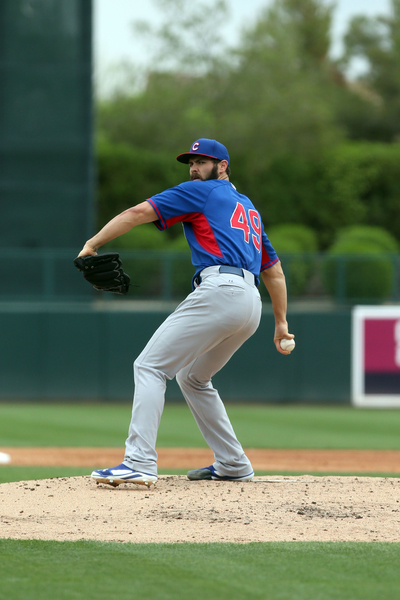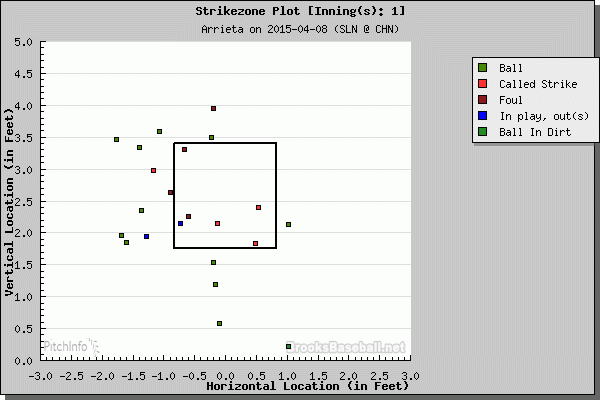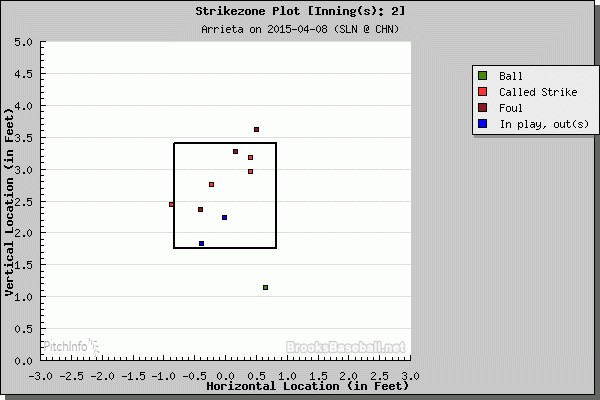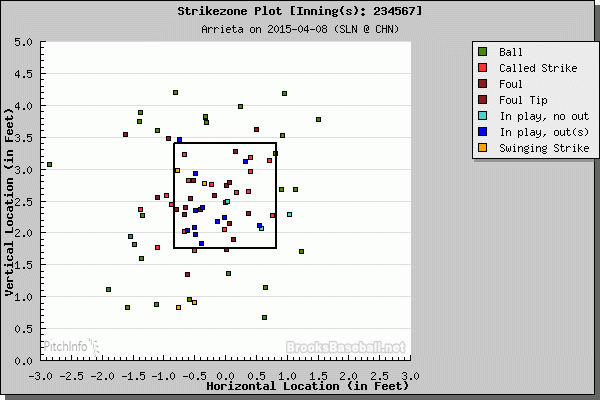If you’re new to my work, you may be unfamiliar with my affection for Jake Arrieta. When the Cubs acquired him from the Baltimore Orioles along with Pedro Strop for Scott Feldman in July of 2013, I was immediately intrigued. A former top prospect for a pitcher who we all knew was brought aboard to likely be flipped come the trade deadline was certainly a nice flier to grab ahold of. However, when Cubs senior vice president of player development and amateur scoutingJason McLeod explained to a group of media members how bullish he was on Arrieta, my curiosity shifted to anticipation. Could the Cubs actually fix a pitcher who many scouts told me would never reach his potential?
Fifty innings into the 2014 season and an interview that left me blown away was all I needed to be all in on Arrieta. We know how impressive he was last season: 2.53 ERA, 27.2 percent strikeout rate, 6.7 percent walk rate, and even some down-ballot Cy Young votes. This season, with the Cubs looking to compete for the first time in years, the expectations for Arrieta will be sky-high. He’ll look to build on his strong 156 2/3 innings from last season and become the workhorse that he expects to be. Wednesday’s start against the Cardinals was certainly a nice way to kick things off.
While the start as a whole was nice, things looked a little iffy in the first inning. Arrieta’s command seemed off, something that had been his biggest concern prior to last year, and even at times early in the 2014 season.
| Inning-by-Inning Pitch Totals | ||||
|---|---|---|---|---|
| Inning | Pitches | Strikes | Strike% in Inning | Cumulative Total Pitches |
| 1 | 22 | 10 | 45.45 | 22 |
| 2 | 10 | 9 | 90.00 | 32 |
| 3 | 19 | 13 | 68.42 | 51 |
| 4 | 17 | 10 | 58.82 | 68 |
| 5 | 12 | 8 | 66.67 | 80 |
| 6 | 12 | 7 | 58.33 | 92 |
| 7 | 12 | 8 | 66.67 | 104 |
As the above table shows, the first was the only inning in which Arrieta failed to throw above 50 percent strikes. He walked two in the frame, but kept the Cardinals off the board in that inning—and the rest of the way. Some felt Arrieta was getting squeezed early on, but catcher Miguel Montero wasn’t making any excuses for his pitcher. From Mark Gonzales in the Chicago Tribune:
“His stuff is too good to try to be too fine,” Montero said. “He was trying to paint the corners, and he doesn’t need to do that. He’s too good, and I let him know, and he agreed. And after that, he was dominating.”
Montero’s version of the events in the first inning appear to be much more accurate than any suggestions that the ump wasn’t doing his job.
There were a few pitches just off the zone that could sometimes be called strikes, but, well, they were balls, so nothing to complain about there. And Arrieta even got a pitch called that was a bit off the plate. This isn’t out of the ordinary, but Montero was right, Arrieta was nibbling. The strikes he did throw were solid, not over the heart of the plate, but legit strikes. But his inability to do so consistently in the first led to the Cardinals drawing two walks, and they chased just two pitches out of the zone, only one leading to an out.
That changed almost immediately, as Arrieta clearly took Montero’s advice—in the above Tribune article, Arrieta said he sometimes needs to be yelled at and Montero sensed that and did the deed. The results are clear.
Arrieta pounded the zone in a quick, ten-pitch, nine-strike second inning. From the get-go, the Cardinals realized they weren’t going to be able to wait out Arrieta like they did in the first, as Jon Jay took three straight strikes before heading to the bench.
The first inning proved to be an aberration on the day and Arrieta continued to pound the zone, and when he missed, it usually was by design, trying to set up a batter or get him to chase, which happened now and then.
There are two things to take away from this start, both of which are going to very big going forward if they continue. The first is that Arrieta continues to show an ability to bounce back from a slow start—he had a similarly rough first against St. Louis last year, but failed to hold them scoreless in that outing. Arrieta is making it hard for anyone not already on the bandwagon to resist jumping aboard. He recovers quickly from any bumps, and even those have become few and far between. If we can see 30 more starts close to the level of Wednesday, Arrieta is going to do more than just garner down-ballot Cy Young votes.
The second thing we saw was Montero take charge of his pitcher. It’s rather remarkable to see him know how to handle Arrieta after having just a month and a half of spring training to get to know him. If he has developed the same rapport with the entire staff, the front office’s decision to look for an established leader (and strong framer) behind the plate is going to look like a stroke of genius. It’s impossible to measure exactly what Montero is doing when it comes to the mental gymnastics he’s performing to get the best out of his pitchers. But there’s no doubt Arrieta believes he had a direct impact on his success on Wednesday. If Montero can continue to work his magic with Hammel, Hendricks, Wood, and even Lester (when he catches him), we may be talking not just about award races for the Cubs, but the playoffs as well.




Great article. My only complaint is no mention of the nasty curve he threw to the opposing pitcher. Would have thought you’d take any opportunity to post that beauty.
I also count 6 strikes that Montero “stole” whether or not he would have gotten those with a neutral framer or worse is something we dont know, but clearly framing has had a tangible impact so far even this early in the season.